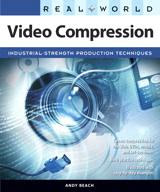 Following reports of services like Qik, Livecast, and Flixwagon for broadcasting live video from mobile phones, Poynter Online reports that the Washington Post and Newsweek started posting live video reports via phone during the Democratic Convention.
Following reports of services like Qik, Livecast, and Flixwagon for broadcasting live video from mobile phones, Poynter Online reports that the Washington Post and Newsweek started posting live video reports via phone during the Democratic Convention.A Post rep told Beet.TV, "We will be using cell phones equipped with a live streaming application from Comet Technologies," and built complete TV studios at the conventions for continuous coverage from reporters and blogging guests.
Poynter.org also covers How Online Video Improves Journalism, a talk with the Washington Post's Travis Fox, a leader in online video storytelling. Blogs have been covering this beat, including Andy Dickinson and News Videographer.
Poynter's most e-mailed post right now is Video SLR Camera Coming From Nikon, which has also been covered by Prolost and others recently!
Update: Camcorder.info adds advice in Camcorder Overkill for Print Reporters.
Update 2: From the YouTube Blog, "in partnership with the Pulitzer Center, YouTube presents Project: Report (www.youtube .com /projectreport), a journalism contest (made possible by Sony VAIO and Intel) for non-professional, aspiring journalists to tell stories that might not otherwise be covered by traditional media"






































